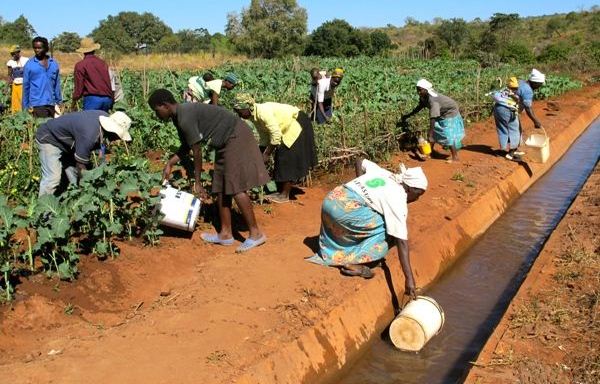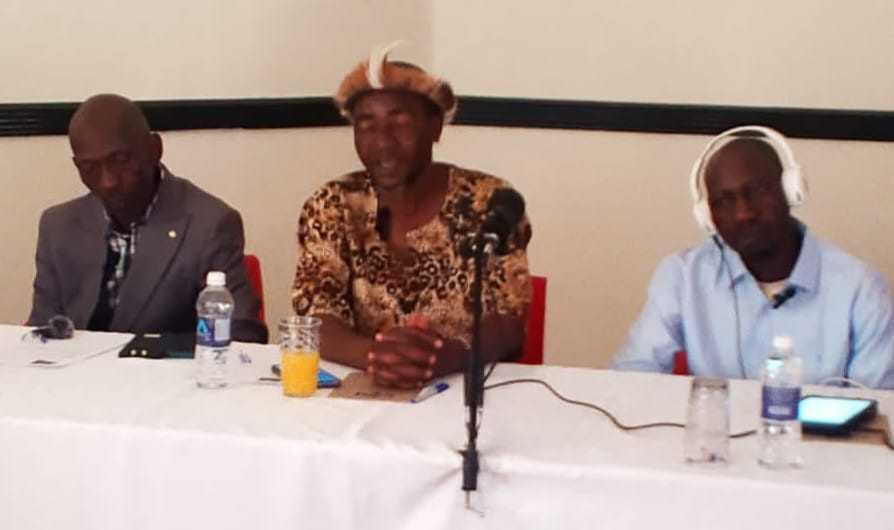
By Phyllis Mbanje
Small-holder farmers in Masvingo have turned around their drought-stricken communities by participating in rural resilience initiatives (R4) and small irrigation support programmes (SIP), which have transformed their lives.
Sixty-year-old Tambudzai Mugabe bears testimony to these projects which have provided reprieve for the villages which have consistently suffered perennial droughts.
Mugabe, who is part of the villagers who joined the Stanmore irrigation scheme which lies 30km east of Masvingo, now has three employees and is able to fend for her family as well as develop her home.
“My last born is at Great Zimbabwe University. I would not have been able to achieve that if I had not joined the scheme,” she says beaming with pride.
Mugabe said initially they were eking out a living from the dry lands, but were not yielding much until the project was resuscitated.
“But you need to work hard in order to maximise from these projects and I urge other women to join similar projects,” she said.
The semi-portable irrigation scheme pumping plant and the in-field infrastructure were in a state of disrepair and not operating in 2014. The scheme applied for financial support under the Food and Agriculture Organisation (FAO) implemented Smallholder Irrigation Support Programme (SIP).
- Chamisa under fire over US$120K donation
- Mavhunga puts DeMbare into Chibuku quarterfinals
- Pension funds bet on Cabora Bassa oilfields
- Councils defy govt fire tender directive
Keep Reading
SIP was a twin FAO-government irrigation development programme that commenced in 2014. It is funded by the European Union and the Swiss Development Cooperation (SDC) to the tune of US$14 million.
Its main aim is to sustainably increase production, productivity and competitiveness of smallholder irrigated agriculture in communal and old resettlement areas.
Anna Chibaya is also another beneficiary who is excited about the scheme which has improved her life.
“Before this project, we were wallowing in abject poverty, but now I can safely send my children to school and retain extra money for other projects at home,” she said.
Another thriving project is Chebvute weir located in Tadzemwa village, ward 17, Masvingo district. This area experiences erratic rainfall inadequate for any meaningful agricultural production. The area has for a long time been targeted for food assistance by government and humanitarian organisations, working to avert chronic hunger.
The first community attempt to construct Chebvute weir was in year 2000, but for 17 years no other effort or funds were channelled towards the project.
A group of 28 community members constructed a 0,2 hectare garden less than 5 metres from the current weir site and started gardening activities as a cooperative. The cooperative is still functional but all the 28 community members have been incorporated into the World Food Programme, Food Assistance for Assets (FFA) project.
Chebvute is the first ward where the R4 rural resilience approach was rolled out in 2018. The initiative is an integrated approach that brings together different layers of risk management activities such as asset creation, promotion of savings and access to credit and weather index insurance.
Outside Zimbabwe, the programme is present across five other countries (Ethiopia, Senegal, Kenya, Malawi and Zambia). Currently benefiting 300 000 people in Zimbabwe, R4 aims at reaching 50 000 people by 2021 in Masvingo and Rushinga districts.
R4 also supports farmers with access to markets, linking them to WFPS Purchase for Progress P4P
The weir, which was built by the community, has enough water to last from one rainy season to the next and currently 3 050 beneficiaries with an estimated total of 670 cattle as well as goats, sheep and donkeys are benefiting from it.
There is also a thriving fish farming project and the fish ponds were stocked with 12 000 fish in January 2018. The first harvest was done in November 2018 in which a total of 123kg of fish was harvested. This year the beneficiaries managed to stock additional 10 000 fingerlings.










